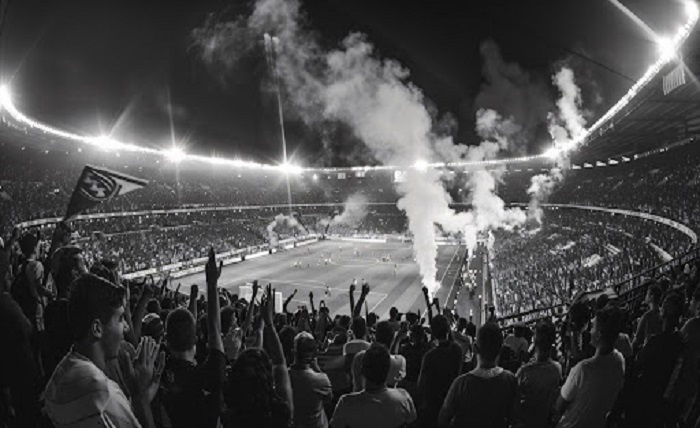How Club Colors Became Destiny: Why Juventus Wears Black and White, How Barça’s Blaugrana Was Born

Football is not only a game — it’s identity, memory, and tradition in color. From Juventus’ bracing black and white to FC Barcelona’s timelessly blaugrana, each color has a story to tell. These colors were not just visual stylistic choices; they became symbols of endurance, solidity, and identity. To discover how club colors shaped destinies, we must travel back in time — into camaraderie, serendipity, and the art of reinvention.
The magic of football is that it unites human beings across frontiers. Fans don’t merely wear the jersey of their team; they become one with it. The same fervor that fuels loyalty in a supporter underlies rational calculation elsewhere in life as well. Most fans derive this competitive rush from virtual processes, where passion converges with calculation — just as in online sports betting, risk and reward are factored into calculated deliberation reflecting the drama of the pitch. Just as Juventus’ black and white or Barça’s red and blue signify conviction, each bet is an act of faith in action.
The Notts County Connection: How Juventus Found Its Identity
One of the football world’s great legends, Juventus, did not initially wear the black-and-white stripes that are now a hallmark of its tradition. When the club was formed by Turin students in 1897, their initial match uniforms were pink, adorned with black ties. The colour, while elegant, quickly faded upon washing — a problem that needed to be overcome. In 1903, a solution was found by one English player, John Savage, who had previously lived in Nottingham. He sent a letter to his former club, Notts County — the oldest professional football club in the world — and asked them to send a kit. The parcel arrived, and with it, the destiny of Juventus. From then on, the Italian giants wore black and white.
That modest meeting forged a lifelong relationship between the two clubs. A century and more on from it, in 2011, Notts County were invited to play the first match at Juventus’ brand-new Allianz Stadium. It was a homecoming of sorts, a reminder that sometimes identity is created by accident. The historical irony is that modest English club Notts County gave Juventus — the future “Old Lady” of Italian football — its colors forever and, perhaps, its air of invincibility. The black-and-white colors were a symbol of refinement and discipline, a reflection of tactical sophistication that would define Italian football in the future.

In the same way, sporting culture evolves together with the entertainment industry. Fans nowadays engage with clubs not just via games but via interactive media. The same anticipation that comes before a goal or a penalty kick is felt in the tension of a slot machine whose every turn holds the promise of breaking through. Both are bound together by tension, timing, and yearning for glory.
The Birth Of Blaugrana: Barcelona’s Colors Of Revolution
Whereas the colors of Juventus were borrowed, those of Barcelona were designed in defiance and artistic persona. The club, founded in 1899 by Swiss student Joan Gamper, adopted the red and blue in early times. But why red and blue?
There are several theories, and each is more fascinating than the previous one. There are some historians who believe Gamper borrowed the colors of FC Basel, his hometown club in Switzerland. Others say it was due to the local Catalan school side, Merchant Taylor’s, which used such identical colours. There is even a more solemn reason — that the team founders literally tore up pieces of red and blue paper at a meeting to use as ballot papers when deciding club matters, and made an unintentional gesture into a tradition.
Whether or not of Catalan descent, the blaugrana spread beyond a shirt. It was an icon of politics and culture. During Spain’s dictatorship era, FC Barcelona represented Catalan resistance — its colors of unity in opposition. Every game at Camp Nou was as much a sporting contest as one of asserting collective identity.
Colors As Legacy: How Identity Shapes Performance
Football colours are not a decoration — they are emotional design. By wearing the colours of their club, the players take on its heritage, its heroes, and its ambitions. The psychological connection between colour and performance has been the subject of research for decades. Studies have shown that teams who wear red are more aggressive and dominant, and blue, concentration, and calmness.
Juventus’ white and black represent balance, discipline, and courage. Barcelona’s red and blue represent duality: intellect and passion, structure and creativity. Each club has made its colors into philosophies.
| Club | Colors | Symbolism/Meaning | Origin Story |
| Juventus | Black & White | Authority, contrast, tradition | Inspired by Notts County (England, 1903) |
| FC Barcelona | Red & Blue | Passion, unity, resistance | Inspired by FC Basel or Catalan identity |
| AC Milan | Red & Black | Fire and fear — aggression and power | Chosen by the founders for symbolism |
These visual identities are intertwined with worldwide recognition. Supporters do not view colors after logos; they see colors first, and they instantly sense belonging or animosity. Football’s color palette has evolved into its emotional vocabulary.
The Global Influence of Club Aesthetics
The color story has driven branding outside football. The colors are commercialized by clubs through merchandise, fashion, and design — turning identity into economy. Blaugrana stripes of Barcelona are now international brandmarks, and Juventus’ basic black-and-white jersey has turned into a symbol of modern sportswear design.
- Merchandising Power: Jerseys and accessories transform fandom into a global business.
- Cultural Symbolism: Colors represent political, regional, or emotional identities.
- Digital Branding: Teams utilize color schemes for social media and fan recognition.
- Emotional Identification: A single color may evoke decades of collective memory and triumph.
It is little wonder that the world’s biggest football clubs are also global fashion and marketing brands. What began as fabric is now an emotional currency.
When History Wears Its Colors Proudly
In the world of football today, where franchises and investors redefine what loyalty means, color is the greatest constant. It’s the heartbeat of every chant, every banner, every dream. Black and white or red and blue — these are colors that remind us that the greatest strength of football lies not in trophies, but in belonging.




